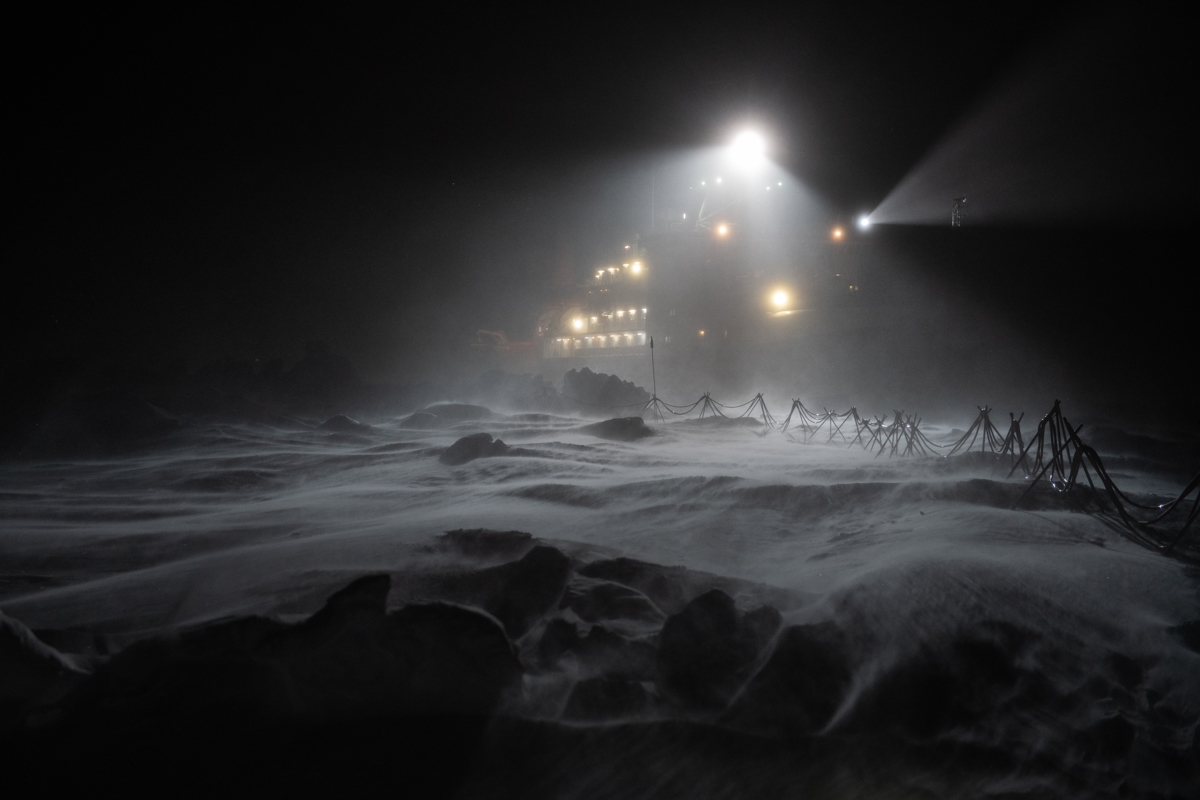Thinner than expected Arctic sea ice has been a challenge for MOSAIC researchers
The scientists are on an unprecedented expedition through the high Arctic winter — and thinner ice has hindered some of their work.

Three months into a year-long drift across the Arctic, scientists aboard the Polarstern have found that the ice floe the ship is attached to is more dynamic than they had expected, but say the weaker ice is indicative of conditions in the modern Arctic.
Markus Rex of the Alfred Wegner Institute in Germany and Matthew Shupe of the University of Colorado gave an update on the ship’s progress to the fall meeting of the American Geophysical Union in San Francisco.
They are among the leaders of the MOSAIC project, a research project that involves scientists from multiple disciplines drifting in the icebreaker through a winter in the Arctic Ocean.
“Right now we are at 87 degrees north, we are on course, almost 21 degrees East and we are locked into the ice. We are drifting with the natural drift of the ice,” said Rex, speaking on a satellite phone from the German icebreaker in a remote part of the Central Arctic, close to the North Pole.
It may be the long polar night, but the scientists are working on the ice every day, sometimes in temperatures as low as minus 30 degrees Celsius and sometimes during stormy weather.
It is the largest Arctic research expedition ever conducted, expected to cover nearly 2,500 kilometers by next fall, with about 100 people on board at a time. The ship is packed with scientific instruments and labs.
“We came to the Arctic in late September. We found that the ice was thinner because of the unusually warm summer here in the Arctic. Nevertheless we found an ice floe that is serving as the basis for our research camps on the ice which we have set up next to the vessel,” said Rex.
“The floe is not perfect, it is thin and keeps breaking like all the other floes here in the new Arctic,” he said.
During a November storm, there was a major crack in the floe and some equipment had to be fished out of the water and set up again. The expedition has to be ready to alter plans depending upon wind and ice conditions, which are always changing.
The storm was exciting, Rex and Shupe said, but also a bit scary as it lasted a couple of days with strong winds.
“It is hard to predict what is going to happen now during the rest of the winter,” said Rex. “The ice is going to get thicker,” but more cracks are always possible.
There are thick parts of the floe, which is about 2.5 kilometers wide and 3.5 kilometers long (1.5 wide and 2.2 miles long), strong enough to give stability for the research equipment set up in various spots near the ship.
Still, the ice is dynamic and new cracks and fissures open up almost on a daily basis, which requires the relocation of equipment on the ice.
“We have to interrupt our work when polar bears pass by as well, so we cannot measure every day, but our comprehensive measurement program is in full swing,” he said. “We will keep this program up and running for the full year no matter which obstacles the Arctic will throw at us.”
There are devices to collect data about the atmosphere, the ocean, the ice, snow and other aspects of the chemistry and biology of the Central Arctic. They are measuring the flow of water beneath the ice, the properties of the ice and snow and trying to understand how systems interact.
The goal is to provide scientific knowledge to help inform the “important decisions our societies have to make to mitigate climate change.”
Shupe said the ice is the centerpiece of the expedition and its experimental program.
“Our starting point is an interesting one with this relatively thin and weak ice,” Shupe said. “It’s posing a challenge for us, of course, with all the dynamics passing right underneath our feet.”
“These are Arctic conditions right now,” he said.
Some sensors have been crushed or moved because of shifting ice conditions and cracks or visits by polar bears, but the instruments are all in working order.
“In the end, the stations are alive,” he said.
“We’ve set up tons of instruments on Polarstern, we’ve built installations on the ice, deployed many autonomous systems across a large domain and we’ve joined forces across disciplines and across national boundaries to address pressing science questions that will help us better understand models and manage the changing Arctic and its impact on the global system,” he said.
Dermot Cole can be reached at de*********@gm***.com.